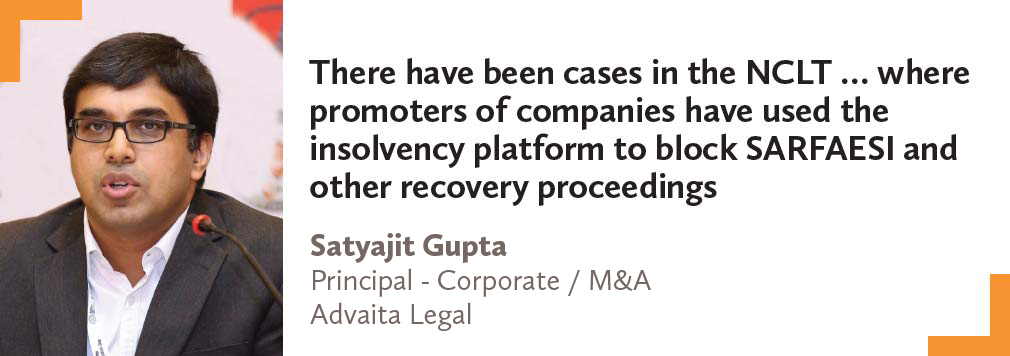The evolution of the Insolvency and Bankruptcy Code is being closely watched by companies, creditors and the government for the part they hope it will play in alleviating the country’s stressed assets problem. Gautam Kagalwala reports
The Insolvency and Bankruptcy Code, 2016 (IBC), was widely anticipated among creditors for its ability to recover outstanding loan amounts, and lawyers, who see insolvency as one of the most promising practice areas. It received former president Pranab Mukherjee’s assent in May 2016, following which the corporate insolvency resolution provision came into effect in December that year. Under the code, the National Company Law Tribunal (NCLT) will hears cases relating to companies and limited liability partnerships, while debt recovery tribunals (DRTs) are for partnerships and individuals. The parliament is also debating the Financial Resolution and Deposit Insurance Bill, 2017, which will deal with banks and financial services companies that have become bankrupt. Once enacted, the laws together will address all kinds of failures and provide needed protection for the financial system.
The IBC is evolving legislation and its effectiveness is being tested at the NCLT and DRTs, and by extension the National Company Law Appellate Tribunal (NCLAT), Debt Recovery Appellate Tribunal (DRAT) and the Supreme Court in cases where parties are dissatisfied with their outcomes.
The law has been praised for providing linear processes and a time-bound resolution of insolvency proceedings, as well as preventing debtors from mismanaging affected business.
Areas of concern
Prior to the IBC, insolvency had been governed by the Companies Act, 1956/2013, the Sick Industrial Companies Act, 1985 (SICA), the Securitization and Reconstruction of Financial Assets and Enforcement of Security Interest Act, 2002 (SARFAESI), and the Recovery of Debt Due to Banks and Financial Institutions Act, 1993 (RDDBFI).
“The provisions of the Sick Industrial Companies (Special Provisions) Repeal Act, 2003, came into effect on 1 December 2016. The repeal act provides for repeal of the SICA and related matters,” says Satyajit Gupta, a principal, Corporate / M&A at Advaita Legal in Delhi, adding that there appears to be no legal impediment for cases being heard by a DRT and DRAT that were constituted under the RDDBFI Act to be initiated as new cases under the IBC.
Once the NCLT accepts the insolvency resolution application, a 180-day moratorium begins. “The new code allows for a moratorium period ordered by the NCLT on the commencement of the insolvency resolution process, which would stay all proceedings under the SARFAESI Act including enforcement of security,” says Akshat Pande, a partner at Alpha Partners in Noida.
He says the IBC has also amended provisions of the RDDFBI Act. “RDDBFI offers limited legal recourses when it comes to debt recovery by banks and other financial institutions. The IBC improves on these issues by the bestowal of rights on all kinds of creditors to issue insolvency proceedings against the debtor.”
Gupta says the interactions of the IBC and debt recovery laws need to be addressed. The former provides for collective action while the latter is geared towards individual creditors. “There have been cases in the NCLT after the introduction of IBC where promoters of companies have used the insolvency platform to block SARFAESI and other recovery proceedings,” says Gupta. “It is critical that the provisions of SARFAESI are harmonized with IBC, so that the former act does not undermine the effectiveness of the latter.”
Cross-border insolvency is another area that needs to be addressed by the Insolvency and Bankruptcy Board of India (IBBI), says Sumant Batra, the managing partner at Kesar Dass B & Associates in Delhi. Many insolvency cases involve foreign creditors and a significant portion of the debt is in foreign currency. Foreign courts may not accept corporate insolvency resolution processes (CIRPs) approved by the NCLT, while the NCLT may not recognize orders from foreign courts.
You must be a
subscribersubscribersubscribersubscriber
to read this content, please
subscribesubscribesubscribesubscribe
today.
For group subscribers, please click here to access.
Interested in group subscription? Please contact us.



























